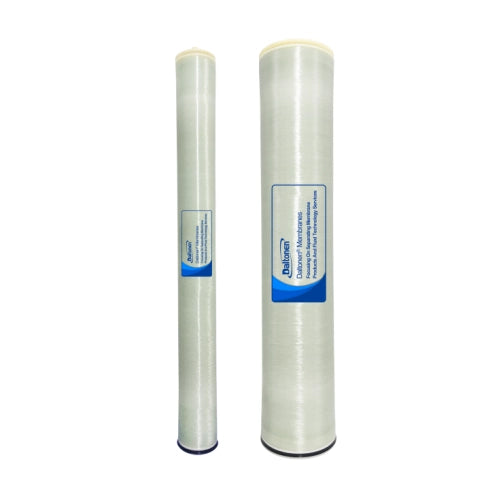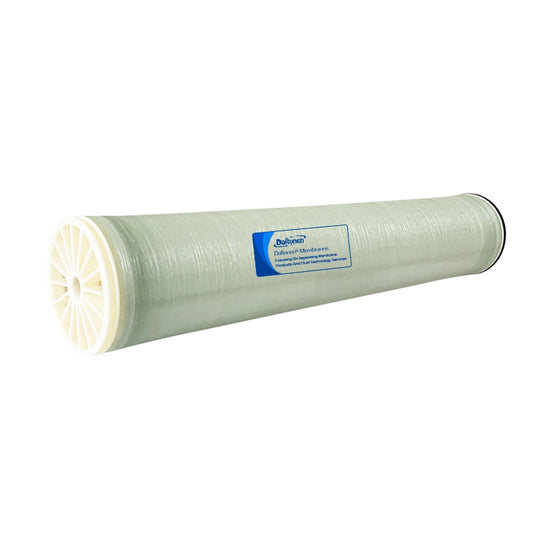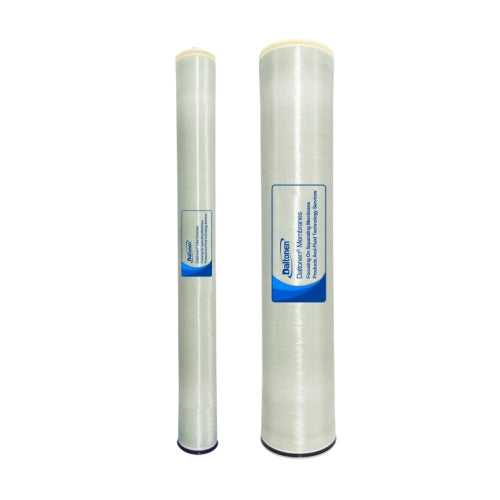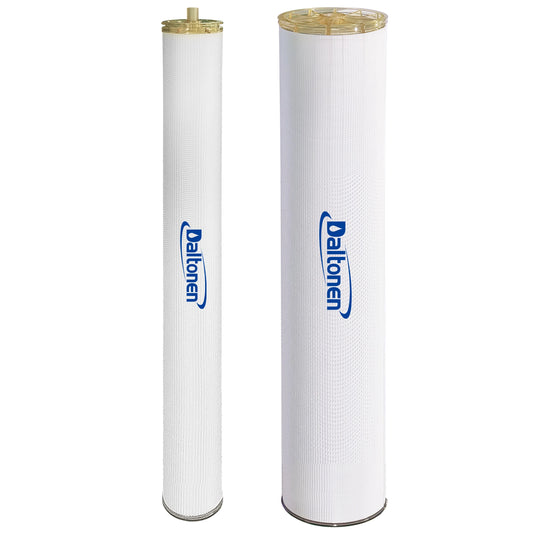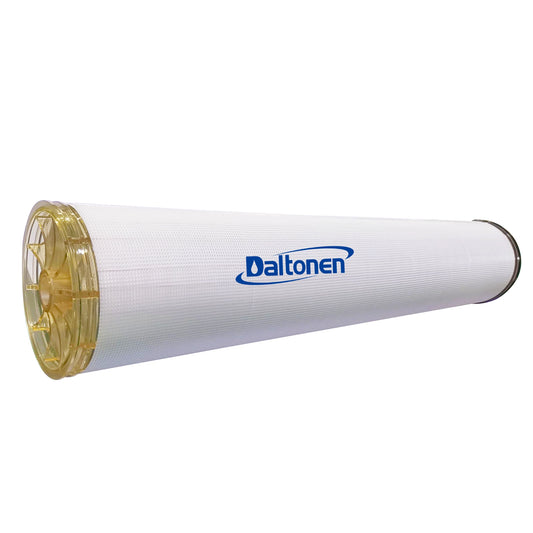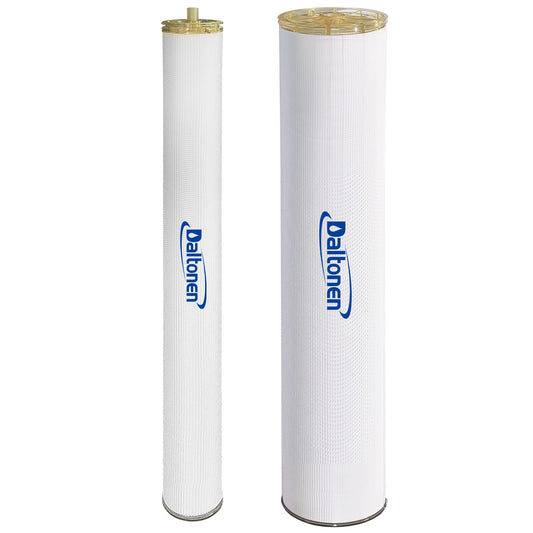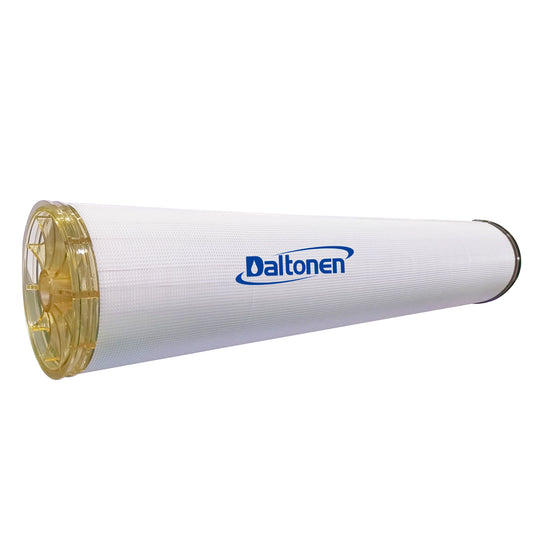RO Membrane Process Scheme for Plant Essence Extraction
20 May 2025
I. Process Design
1. Raw Material Pretreatment Stage
Coarse Filtration:
The plant extract liquid, obtained after breaking down the plant material, is filtered through a screen mesh with a pore size of 100 to 200 mesh to remove large particulate impurities such as coarse fibers and debris.
Centrifugal Separation (Optional):
For extract liquids containing lipophilic components (such as essential oils), a disc centrifuge operating at 3000 to 5000 rpm is used to separate the oil phase, preventing contamination of the RO membrane.
Ultrafiltration Pretreatment:
An ultrafiltration membrane with a molecular weight cut-off of 10 to 50 kDa (such as a polyethersulfone membrane) is employed to remove proteins, colloids, and high molecular weight pigments. This step reduces the risk of fouling of the subsequent RO membrane while retaining the target low molecular weight active components (e.g., flavonoids with a molecular weight of less than 1 kDa).

2. RO Membrane Concentration Stage
Membrane Module Selection:
-
Fouling-resistant RO Membrane: A polyamide composite membrane (such as Dow Filmtec™ BW30-4040) is chosen, with a molecular weight cut-off of ≥100 Da, achieving a retention rate of ≥98% for polysaccharides and polyphenols.
-
High-temperature Resistant Membrane (Optional): If high-temperature sterilization is required (e.g., for pharmaceutical-grade extracts), an RO membrane capable of withstanding 80℃ (such as Toray TMH20A) is selected.
Operating Parameters:
-
Pressure: 1.5 to 3.0 MPa (dynamically adjusted according to the osmotic pressure of the extract liquid to prevent membrane compaction).
-
Temperature: 25 to 35℃ (low temperature to protect heat-sensitive components; a cooling system may be configured if necessary).
-
Recovery Rate: 60 to 70% for a single stage, and up to 90% or more for multi-stage series connection (resulting in a final concentrate concentration of 5 to 10 times).
Retention Mechanism:
-
Molecular Sieving: The target active components (such as polysaccharides and flavonoids) are retained, while water, inorganic salts, and very small molecules (such as monosaccharides) are allowed to pass through.
-
Charge Repulsion: The negative charge on the membrane surface repels negatively charged phenolic acids, reducing membrane fouling.
3. Post-treatment and Finished Product
Sterilization: The concentrated liquid is sterilized using a 0.22μm microfiltration membrane or subjected to low-temperature pasteurization (60℃ for 30 minutes).
Drying (Optional): The concentrated liquid can be processed into a powder product through spray drying or freeze-drying to preserve the active components.
Permeate Reuse: The permeate from the RO process (deionized water) is reused in the plant extraction process, achieving resource recycling.
4. System Maintenance
CIP Cleaning: The system is cleaned every 8 to 12 hours with a solution of 0.1% NaOH + 0.05% EDTA to remove organic fouling, and every 3 days with 1% citric acid to remove inorganic scaling.
Membrane Lifespan: With proper maintenance, the membrane can last 2 to 3 years, with a flux decline rate of ≤15% per year.
II. Core Equipment Configuration
Module
Equipment and Parameters
Pretreatment Unit
Vibrating screen (200 mesh), ultrafiltration system (PES membrane, 10 kDa), centrifuge (DRY-315 model)
RO Membrane System
Fouling-resistant RO membrane module (BW30-4040), high-pressure plunger pump (3.5MPa), PLC automatic control system
Post-treatment Unit
Microfiltration sterilization device (0.22μm), spray drying tower (inlet temperature 160℃), permeate storage tank
Monitoring System
Online conductivity meter, pressure sensor, temperature controller, active component concentration detection (HPLC coupling)
III. Expected Results and Advantages
Indicator
Traditional Evaporation Method
RO Membrane Concentration Method
Active component retention rate
70 to 85% (decomposition at high temperature)
≥95%
Energy consumption (kW·h/m³)
80 to 120
15 to 25 (energy saving of over 70%)
Essential oil loss rate
30 to 50%
≤5% (low-temperature operation)
Concentration factor
3 to 5 times
5 to 10 times (multi-stage series connection)
Technical advantages:
Component preservation: Low temperature prevents oxidation and decomposition of heat-sensitive components (such as essential oils and vitamins).
Selective separation: Precise retention of target molecules is achieved through membrane pore size and charge characteristics, improving purity.
Zero wastewater discharge: The permeate (pure water) is reused in the extraction process, reducing water consumption.
IV. Considerations
Membrane compatibility testing: The chemical compatibility of the extract liquid's pH (usually 3 to 8) and ethanol concentration (if solvent is present) with the RO membrane material needs to be verified.
Fouling control: Extract liquids with high sugar content (such as honey and fruit juice) are prone to microbial growth, and 0.1% potassium sorbate should be added to inhibit bacterial growth.
Process integration: Integration with ultrafiltration and nanofiltration can achieve multi-stage molecular weight fractionation (e.g., first removing impurities with ultrafiltration, then concentrating active components with RO).
V. Application Cases
Concentration of Rose Essential Oil Aqueous Extract:
The original liquid contained 0.05% essential oil, which was concentrated to 0.5% using RO, with an essential oil retention rate of 98%. The permeate was reused for rose petal washing.
Ganoderma Lucidum Polysaccharide Extraction:
After removing proteins with ultrafiltration (50 kDa), the polysaccharide solution was concentrated to 8% using RO, increasing the purity from 65% to 90%.
Tags:
